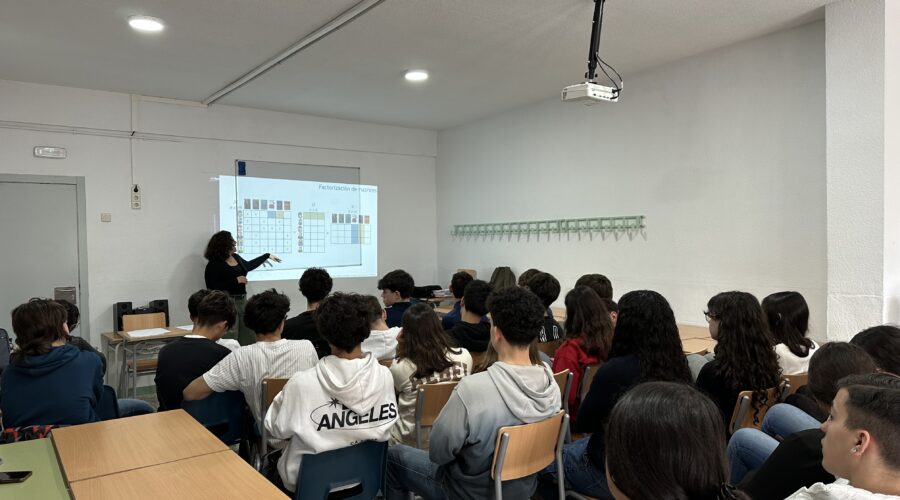IMDEA Networks

IMDEA Networks celebrates the International Day of Women and Girls in Science with an inspiring talk on research and pioneering women scientists
Fostering STEM vocations among young students
11 February 2025

In the context of the International Day of Women and Girls in Science, IMDEA Networks organized an educational talk today, February 11th, at the Liceo San Pablo de Leganés for students in their 4th year of ESO and 1st year of Bachillerato (equivalent to high school and early college years). The main objective was to introduce the fascinating world of STEM (science, technology, engineering, and mathematics) to young female students and encourage their interest in these fields, which are in high demand in the labor market but where the presence of women remains scarce.
According to the report ‘Scientists in Figures‘, women represent a large majority (71.8%) in Health Sciences, but only 26.5% in Engineering and Architecture. This gap is reflected in the labor market, where the ‘She figures 2024‘ study by the European Commission reveals that women make up only 25% of professionals in these disciplines, despite representing 41% of the total workforce.
The activity, framed within the Researchers at Schools initiative, funded by the European Union under the Horizon Europe Program and as part of the Marie Skłodowska-Curie actions, was an example of how future scientists can be inspired and gender equality promoted in such an important field as science and technology. To this end, it featured the participation of Livia Chatzieleftheriou, Juan de la Cierva postdoctoral researcher at IMDEA Networks. Chatzieleftheriou enthusiastically shared her professional career path, the challenges she faced, and the satisfactions her STEM career has brought her: traveling, meeting people from different cultures and countries, etc.
The session covered a wide range of topics, from the definition of STEM and its relevance in today’s world, to the presentation of concrete research examples in areas such as autonomous vehicles (where an ultra-reliable and low-latency communication service is needed to prevent accidents), recommendation algorithms, and augmented reality. Chatzieleftheriou stressed how mathematics is a fundamental tool in all these applications, emphasizing the importance of this discipline for technological development. In fact, she explained queueing theory and matrix factorization to the students.
In addition to Chatzieleftheriou’s presentation, the students participated in a fun interactive game and learned about influential women in science and technology, both from the past and present, such as Hedy Lamarr (whose technology became the basis of modern wireless communications such as Bluetooth, Wi-Fi and GPS), Marian Croak (whose research allowed VoIP calls to be routed over the Internet instead of traditional telephone lines), and Yvonne Brill (whose invention was key to the success of countless satellite missions, including those dedicated to communications, weather forecasting and GPS navigation), whose achievements have inspired generations of scientists. They serve as role models, women who shaped history, and whom we highlight so that their work is also known and recognized.


Recent Comments